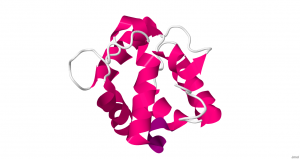Correcting Fragile X Syndrome Deficits by Targeting Neonatal PKCε Signaling in the Brain

Carlos Portera-Cailliau, PhD
Principal Investigator
Nazim Kourdougli, PhD
FRAXA Fellow
UCLA
Los Angeles, CA
2019-2020 Grant Funding: $90,000
Summary
FRAXA Research Foundation has awarded a $90,000 grant to postdoctoral fellow Nazim Kourdougli, PhD and principal investigator Carlos Portera-Cailliau, PhD at the University of California at Los Angeles (UCLA). They are investigating whether a novel drug which acts on Kv3.1 channels can rescue sensory processing deficits in Fragile X knockout mice. Because people with Fragile X have similar problems in tactile and visual processing, this approach may point to a new treatment for the syndrome.
Kv3.1 is a promising Fragile X treatment target also being pursued by UK-based Autifony Therapeutics based on FRAXA-funded research by Leonard Kaczmarek’s group at Yale and others.
The Science
by Nazim Kourdougli, PhD
Atypical sensory processing occurs in most individuals with Fragile X syndrome (FXS) and is believed to contribute to social interaction difficulties, anxiety, as well as avoidance and repetitive behaviors. But the disruptions in brain networks (large groups of cells working together) that underlie these behaviors in FXS remain unknown.
In the last few years, our group has focused specifically on vision and the sense of touch. Emerging evidence from our laboratory suggests that hypersensitivity to touch could result, at least in part, from impaired habituation to repetitive sensory stimuli in the brain. Separately, using a behavioral task, we recently showed that both human subjects with FXS and the Fmr1 knockout mice show similar impairments in motion perception.
In Fragile X mice, this impairment is caused by reduced firing of a subset of inhibitory interneurons in the brain’s visual cortex, called parvalbumin-positive cells. We think that the same reduced firing may be happening in humans who have Fragile X.
In this FRAXA-funded project, we will investigate whether a novel drug can rescue the sensory processing deficits of Fmr1 knockout mice. This new drug acts on Kv3.1 channels, which are known to increase the firing of parvalbumin neurons. We will test whether the drug improves deficits in tactile avoidance and visual perceptual learning in fragile X mice. Because human patients with FXS exhibit similar problems in tactile and visual processing, we believe that our approach has significant potential to lead to a new treatment for the disorder.
Parvalbumin is a calcium-binding albumin protein. Parvalbumin-containing neurons, a subset of GABAergic neurons, shape and synchronize neural network activities. Changes in the function of parvalbumin-expressing neurons have been implicated in neurodevelopmental disorders, including Fragile X syndrome.


